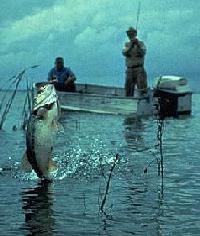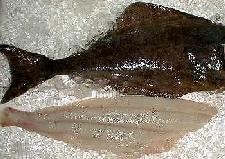|
For example, rain carries the chemicals from the land into the rivers, lakes and oceans where the chemicals lodge in the bodies of simple organisms such as plankton. The chemicals may not affect a single microscopic organism, but a small shrimp may consume millions of the poisoned plankton in a day.
A fish which eats many hundreds of the shrimp in a day will then receive not only the chemical dose that each shrimp absorbed from the water, but the magnified dose from the millions of plankton consumed by the shrimp as well. Another fish eats the smaller fish and so on until, for example, an eagle - or a human - eats a salmon. That salmon contains a hugely magnified dose of the poison, which will invariably affect the animal eating it.
In Santa Monica Bay in Southern California, bottom dwelling fish that are caught and eaten can be deadly. Between 1949 and 1979, Los Angeles dumped 1,000 pounds of DDT per day into the Bay. That poison, along with the rest of the waste we have been dumping since the 1930s, is still out there.
Today, a huge solid waste "doughnut" rests on the ocean
floor off Santa Monica Bay, covering two square miles.
Ocean currents continually bring this material up, poisoning
sea life and bathers. The U.S. Environmental Protection
Agency is embarking on a plan to address this problem,
but it is tricky. In the meantime, people are being poisoned.
|


